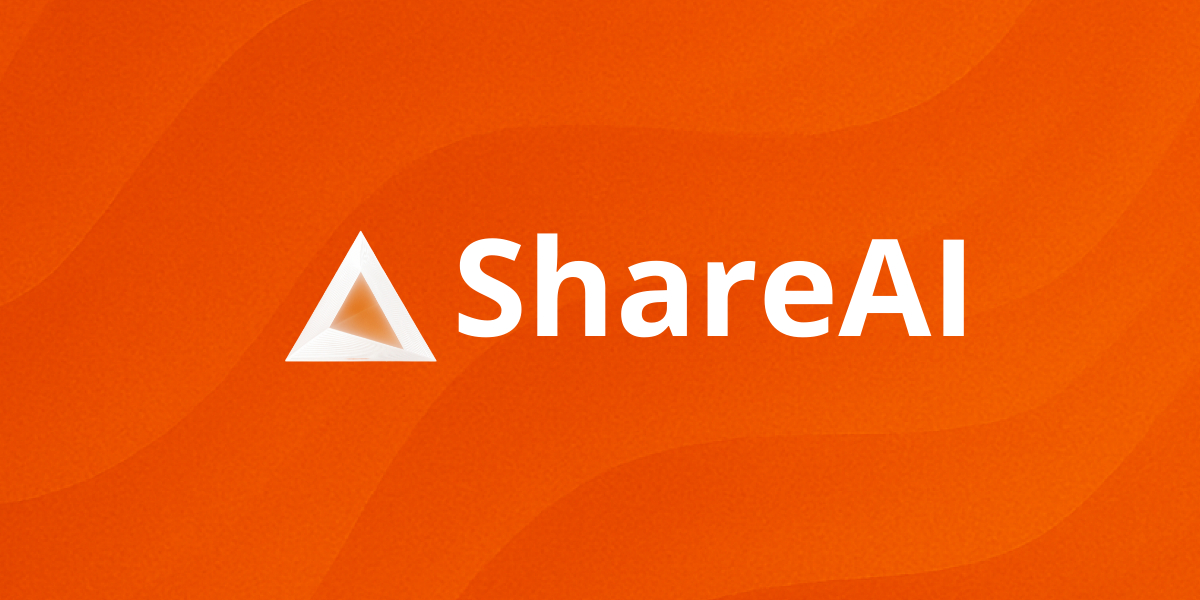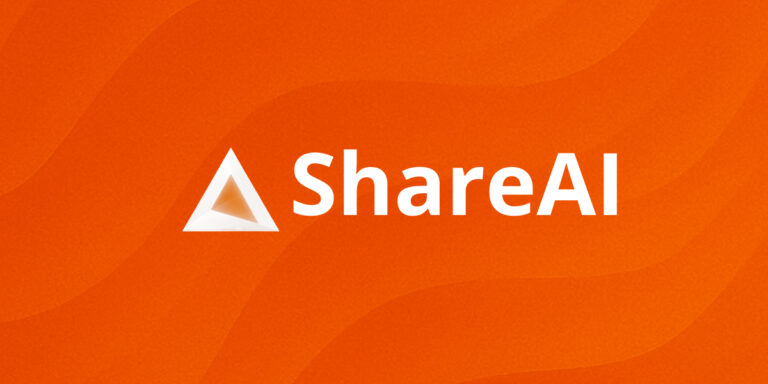How Should SaaS Companies Monetize Their New AI Features?

For most founders, adding AI isn’t the hard part anymore—pricing it is. Unlike traditional features, every AI interaction carries real marginal cost tied to model APIs. Every click on “generate” costs you money. So how should SaaS companies monetize their new AI features without hurting adoption or margins? Below are the three proven models, the hybrids we’re seeing succeed, and how ShareAI helps you price with confidence.
TL;DR: instrument cost and usage per feature, choose a simple pricing pattern (included, metered, add-on, or hybrid), then enforce guardrails and policies with a model-aware gateway.
The Challenge: Pricing a Feature That Has a Real Cost
Traditional SaaS features are near-zero marginal cost once built. AI is different: LLMs, vision, and speech APIs add variable COGS on every request. That changes packaging, upgrade motion, and retention math.
What makes AI pricing hard
- COGS drift: token prices, input:output ratios, and provider performance fluctuate.
- Demand spikes: usage can be bursty; throttling and failover impact perceived value.
- Value clarity: users love “magic,” but don’t always understand cost drivers.
Critical guardrails
- Quotas & caps: monthly credits, soft warnings, hard stops.
- Budgets & alerts: per tenant/project; notify before overages.
- Routing policies: pick cheapest/fastest/reliable/compliant models per feature, not per app.
- Observability: track $ per 1K tokens, p50/p95 latency, success rate, and error taxonomies.
Start with a clear unit economics view, then choose the simplest pricing model that protects your margins.
1) Including AI in Existing Plans
Approach: Add AI features to your current tiers at no extra fee.
Pros
- Easiest story for customers; lifts perceived value and retention.
- Encourages broad trial and word-of-mouth.
Cons
- Margin erosion for heavy users.
- Harder to attribute ROI and plan upgrades.
Best for: Enhancements (e.g., smart suggestions, rewrites, summaries) where AI is not the core job-to-be-done.
How to implement with ShareAI
- Tag each request with
feature,plan,tenantfor clean analytics (see code below). - Give each plan monthly AI credits, then throttle or degrade gracefully after the cap.
- Apply a cost-optimized routing policy (e.g., cheapest within SLO) to preserve gross margin.
- Watch p95 and $ per 1K tokens in the User Guide dashboards.
2) Usage-Based Pricing
Approach: Charge per request, per token, per document, or per minute—mirroring underlying API cost.
Pros
- Tight cost ↔ revenue alignment; scales naturally with power users.
- Transparent for enterprise and developer audiences.
Cons
- Communication complexity; potential bill shock.
- Forecasting and procurement hurdles in SMB.
Best for: Analytics, automation, developer tools—audiences already comfortable with metering.
How to implement with ShareAI
- Show real-time usage meters and pre-purchase credits in-app.
- Set budgets and webhook alerts for approaching/over-budget tenants.
- Use policy routing to pick the fastest within budget for interactive flows and cheapest for batch jobs.
- Point technical buyers to the API Reference and Docs.
3) Add-On or “AI Pack”
Approach: Sell AI as a separate paid module (e.g., “Pro + AI” or “AI Power Pack”).
Pros
- Clear value separation; easier price tests and upsells.
- Power users who benefit most are willing to pay more.
Cons
- Pricing page complexity and potential UX fragmentation.
Best for: CRM, design, productivity, and vertical SaaS where AI is transformational for a subset, not essential for everyone.
How to implement with ShareAI
- Use plan-scoped keys and model allowlists per add-on.
- Apply per-module quotas and region-specific routing (e.g., EU-only).
- Track ARPU lift vs. COGS via feature tags and cost analytics.
4) Hybrid Approaches and Emerging Models
Real-world pricing often blends the above:
- Included credits + PAYG overage: e.g., 200 credits/month in Pro, then metered at a fair rate.
- AI Boosters: temporary throughput/priority upgrades for campaigns or quarterly crunches.
- AI-powered tiers: seat price + included credits + discounted overage.
- Outcome/value-based (advanced): charge on measurable outputs—requires strong measurement.
How to implement with ShareAI
- Configure tiered policies by plan (Starter = cost-optimized; Enterprise = latency-optimized).
- Enforce instant failover to preserve SLOs without blowing your budget.
- Use regional routing to meet data-locality and compliance requirements.
Unit Economics Playbook
Model your COGS
- Estimate effective tokens/request (input + output) and typical input:output ratio.
- Include retry rates, safety filters, and tool-call overhead in your baseline.
Simple back-of-napkin
COGS_per_request ≈ ((input_tokens + output_tokens) / 1000) * model_price_per_1K Then add a buffer for retries/failover and any post-processing.
Set target margins
- Define target gross margin per feature and per plan.
- Use routing policies to keep p95 within SLA while staying within your COGS ceiling.
Controls to protect margins
- Quotas & rate limits per tenant/feature.
- Semantic caching and prompt compression for repeatable prompts.
- Batching low-priority jobs to cheaper models.
- Evals to detect regressions when changing models.
Dashboarding with ShareAI
- $ per 1K tokens and cost per request by feature, tenant, and plan.
- p50/p95 latency, success rate, throttling.
- Trends and alerts when crossing thresholds.
Browse models in the Models (Marketplace) and try prompts in the Chat Playground. Create keys in Create API Key and manage spend in Billing.
Pricing Scenarios
Scenario A — Included with caps
- Pro plan includes 200 AI credits/month (soft warning at 80%, hard cap at 100%).
- Overage billed at a predictable rate per 1K tokens.
- Routing: cost-optimized with latency floor.
Scenario B — Metered
- $X per 1K tokens with volume discounts at tier edges.
- Live usage bar; webhook notifications at 50/80/100%.
- Routing: latency-optimized for interactive flows; cheapest for batch.
Scenario C — AI Pack
- “AI Power Pack” +$29/mo includes 3K credits, then PAYG.
- Model allowlist and faster SLA on pack routes.
- Routing: reliability-first (prefer providers with best uptime for the pack).
How ShareAI Helps You Monetize AI Features More Efficiently
ShareAI is a model-aware gateway with one API to 150+ models, policy-driven routing, and unified cost analytics—so you can price confidently and keep margins healthy.
- Unified API & routing: choose policies (cheapest/fastest/reliable/compliant) per feature or tier.
- Usage & cost analytics: attribute spend to feature / user / tenant / plan; export for billing.
- Spend controls: budgets, caps, and alerts at every level.
- Key management & RBAC: plan-scoped access; rotate centrally.
- Instant failover & rate-limit smoothing: protect SLOs that drive conversion and retention.
- Consolidated view of provider costs: de-risk vendor lock-in and keep optionality.
Get oriented in the Docs Home, see what’s new in Releases, or try it live in the Chat Playground.
Quick Start (Code)
JavaScript (fetch)
/**
* Get started:
* https://shareai.now/docs/api/using-the-api/getting-started-with-shareai-api/?utm_source=blog&utm_medium=content&utm_campaign=saas-ai-pricing-monetization
*/
const SHAREAI_API_KEY = process.env.SHAREAI_API_KEY;
async function generateBrief(input) {
const res = await fetch("https://api.shareai.now/v1/chat/completions", {
method: "POST",
headers: {
"Authorization": `Bearer ${SHAREAI_API_KEY}`,
"Content-Type": "application/json",
},
body: JSON.stringify({
// Use a policy alias, e.g., "policy:cost-optimized" or "policy:latency-optimized"
model: "policy:cost-optimized",
messages: [
{
role: "user",
content: `Draft a 5-bullet industry brief about: ${input}`,
},
],
// Tag for analytics and pricing decisions
metadata: {
feature: "briefing",
plan: "pro",
tenant: "acme_inc",
},
stream: false,
}),
});
if (!res.ok) {
throw new Error(`HTTP ${res.status}`);
}
return await res.json();
}
Python (requests)
"""
Get started:
https://shareai.now/docs/api/using-the-api/getting-started-with-shareai-api/?utm_source=blog&utm_medium=content&utm_campaign=saas-ai-pricing-monetization
"""
import os
import requests
API_KEY = os.environ["SHAREAI_API_KEY"]
URL = "https://api.shareai.now/v1/chat/completions"
payload = {
"model": "policy:cost-optimized",
"messages": [
{
"role": "user",
"content": "Summarize our weekly changelog in 3 bullets."
}
],
"metadata": {
"feature": "changelog_summarize",
"plan": "team",
"tenant": "acme_inc"
},
"stream": False
}
resp = requests.post(
URL,
json=payload,
headers={"Authorization": f"Bearer {API_KEY}"},
timeout=60
)
resp.raise_for_status()
print(resp.json())Create your API key • Try a model in the Playground
FAQ: How Should SaaS Companies Monetize Their New AI Features?
What’s the best way to price AI features in SaaS? Start simple: included credits + metered overage. Instrument cost and usage per feature, then iterate.
How do I prevent AI bill shock for customers? Show live usage bars, forecast spend, and send alerts at 50/80/100%. Offer pre-purchase packs.
Should I use per-token, per-request, or per-document pricing? Match units to user mental models. Dev tools: per token. End-user content tools: per request/document.
How do I estimate LLM cost per user? Track effective tokens per task and sessions per user; compute COGS per active user from request tags.
Can I mix open-source and vendor LLMs under one price? Yes—route behind ShareAI’s policies; keep prompts constant while swapping models to hit margin targets.
How do I enforce quotas and rate limits for AI features? Set caps per plan and tenant; apply policy routing and instant failover to preserve SLOs.
Does latency (p95) affect conversion enough to justify pricier models? Often yes for interactive UX. Use latency-optimized policies where it matters; cost-optimized elsewhere.
How do I migrate from flat pricing to hybrid without churn? Grandfather existing plans, introduce credits + PAYG, and give in-product transparency before billing changes.
What metrics matter most for AI pricing? Gross margin, $ per 1K tokens, cost per request, p95 latency, success rate, and throttling—all segmented by feature and tenant.
Where do I start building and measuring? Explore models in Models, test in the Playground, read the Docs, and get credentials via Create API Key.
Conclusion
How should SaaS companies monetize their new AI features? Choose a clear model, instrument relentlessly, and enforce guardrails that protect margins. In practice, most teams land on a hybrid: included credits + predictable overage, with policy-driven routing to balance speed and cost.
ShareAI gives you the operational layer to price confidently: one API to 150+ models, usage and cost analytics by feature/tenant/plan, budgets and alerts, and instant failover to preserve SLOs when it matters most. Try it now in the Chat Playground and scan Releases to see what’s new.
